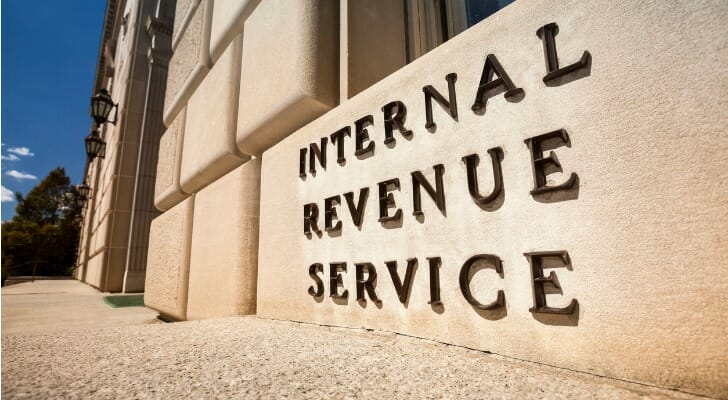As part of your employee benefits package, you may have the option to own stock in the company you work for. You can own company shares inside your 401(k) but once you start taking distributions, those investments would be subject to capital gains tax. Applying net unrealized appreciation (NUA) to those distributions could help you to lock in a lower capital gains rate on the sale of company shares. If you have company stock in your retirement plan at work, NUA could help you save money on investment taxes. Working with a financial advisor can disclose a number of ways to save on your taxes.
Net Unrealized Appreciation Definition
Net unrealized appreciation or NUA is a fairly simple concept. It represents a difference in value between the average cost basis of company shares you own and the actual current market value of those shares.
So, assume that you buy 100 shares of company stock at $25 each, then after 10 years, those shares have doubled in value to $50 each. The $2,500 you initially invested to buy the shares is your cost basis. The $2,500 in gains would represent your net unrealized appreciation or the gap between what you paid originally and what those shares are worth now.
Why does this matter? It has to do with how distributions from 401(k) plans and other employer-sponsored tax-deferred retirement accounts are taxed. Ordinarily, distributions (including those made in retirement or when you change jobs) would be taxable as ordinary income. Depending on your tax bracket at the time of the distribution, this could result in a sizable tax bill if your shares of company stock have greatly appreciated over time.
The NUA election doesn’t allow you to sidestep paying taxes on the sale of company stock entirely. But it can help you to pay taxes on any profits you realize at a more favorable tax rate.
How Net Unrealized Appreciation Works
Normally, when you want to take a distribution from a 401(k) plan that includes shares of company stock, you’d have a few options:
- Rolling the entire distribution over to an IRA
- Rolling it over to a new 401(k) plan if you’re changing employers
- Separating company stock out into a taxable brokerage account and rolling the remaining account balance over to an IRA or new 401(k)
Net unrealized appreciation can be used if you choose the third option. If you’re transferring shares of company stock to a taxable account, then NUA lets you pay ordinary income tax only on the cost basis of the stock. If you decide to sell the stock at some point, you’d benefit from paying the lower long-term capital gains tax rate, which maxes out at 20%.
Rolling shares of company stock into a new 401(k) or IRA wouldn’t allow you to get the full benefit of NUA. Instead, you’d pay ordinary income tax rates on any distributions you take, which currently have an upper limit of 37%. While separating shares of company stock from the rest of your retirement account investments adds a step to the distribution process, it can be well worth it when it’s time to pay the IRS.
How to Use NUA to Save on Taxes

The IRS allows employees who have company stock in their 401(k) plans to take advantage of the NUA rule. But there are a few guidelines to know in order to be able to take advantage of it. First, you have to be a current or former employee of the company whose stock shares you own. Those shares must have been held inside a qualified employer-based retirement plan, which can include a 401(k), profit-sharing plan, pension plan or stock bonus plan.
It’s important to note that you can’t use NUA rules to save on taxes with a Roth IRA, since those already offer tax-free withdrawals in retirement. And of course, a taxable brokerage account would already be subject to capital gains tax on the sale of investments so net unrealized appreciation doesn’t apply here either.
To get the most benefit from a net unrealized appreciation approach, you’d have to take a distribution from your company’s plan. But you can only use NUA if you’re separating from the company or you reach age 59.5 and you have to withdraw the full balance of your account. If you’re taking the distribution before age 59.5, a 10% early withdrawal tax penalty may apply.
When you take the distribution, you have to separate out company stock from other investments. Those shares of company stock have to be routed to a taxable brokerage account but the rest of the distribution could be rolled over to an IRA or new 401(k) if you’re changing jobs. Your plan administrator or brokerage should be able to help guide you through this process.
If you don’t have a taxable brokerage account set up, you’ll need to do that first before initiating the distribution. When comparing online brokerage accounts, pay attention to the fees you’ll pay to invest as well as things like minimum deposit requirements and investment options. While many brokerages charge $0 commission fees to trade stocks and exchange-traded funds (ETFs) there are some that still charge transaction fees.
When to Use Net Unrealized Appreciation
One thing to remember about NUA is that you will have to pay ordinary income tax on any shares of company stock you receive at the time of the distribution. So, depending on your current tax bracket versus what tax bracket you expect to be in at retirement, this could have an impact on your tax savings.
The wider the gap is between the ordinary income tax rate you’d pay and the long-term capital gains tax rate, the more you could potentially save from using an NUA strategy. Likewise, the more a stock has appreciated over time, the more value you’d get from applying net unrealized appreciation when taking a full distribution from your workplace plan.
Consider how long you plan to hold on to company shares in a taxable account when deciding whether it makes sense to use NUA. As time goes on, the tax savings associated with net unrealized appreciation is reduced as your investments grow on a tax-deferred basis. So in terms of who may get more benefit from NUA, it’s typically an investor who plans to sell shares of company stock relatively quickly after transferring them to a brokerage account.
Bottom Line

Net unrealized appreciation can be a useful tax planning tool if you own shares of your employer’s stock in a workplace retirement plan. There are some guidelines to follow when using this strategy, so it may be helpful to talk to a tax professional about the best way to approach it. But depending on how much your company stock shares have increased in value and how long you plan to hold on to them, NUA could significantly downsize your tax bill.
Tips for Financial Planning
- Consider talking to a financial advisor about the best ways to manage shares of company stock you own inside your workplace plan. SmartAsset’s free tool matches you with up to three vetted financial advisors who serve your area, and you can interview your advisor matches at no cost to decide which one is right for you. If you’re ready to find an advisor who can help you achieve your financial goals, get started now. get started now.
- Use SmartAsset’s tax return calculator to see how your income, withholdings, deductions and credits impact your tax refund or balance due amount.
Photo credit: ©iStock.com/alfexe, ©iStock.com/Pgiam, ©iStock.com/damircudic
